LightWave 10.x
Lightwave Titles
- Dinosaur Sub-D Modeling
- Dinosaur UV Mapping
- Spacecraft Modeling
- Surfacing for Beginners Volume #1
- Surfacing for Beginners Volume #2
- Surfacing for Beginners Volume #3
- Advanced UV Mapping Volume #1
- Advanced UV Mapping Volume #2
- Modeler Volume #1
- Modeler Volume #2
- Modeler Volume #3
- Modeler Volume #4
- Modeler Volume #5
- Modeler Volume #6
- Rigging a T-Rex with Skelegons
- Rigging a T-Rex with Bones
- Animating a Tyrannosaurus
- Sci-Fi Modeling-Interiors Hallways and Corridors
- LW CAD 3.6 Modeling Tools Volume #1
- LW CAD 3.6 Modeling Tools Volume #2
- LW CAD 3.6 Modeling Tools Volume #3
- LW CAD 3.6 Modeling Tools Volume #4
- LW CAD 3.6 Modeling Tools Volume #5
- LW CAD 3.6 Modeling Tools Volume #6
- Rigging a Human
- Animation Essentials-Vol. #1
- Animation Essentials-Vol. #2
- Camera Essentials
- Sci-Fi Modeling (Volume #2)-Exteriors: Futuristic City
In this course, D.W. Burman unlocks the power of LightWave's gradient systems by demonstrating all of the various gradient types found in LightWave and by showing example scenes that use gradients. This course starts at a fairly basic level, but is geared toward people who have some experience using LightWave.
4hr 17min of video training.
Click for more details.Part Two of the Bullet Holes in a Metal Door tutorial picks up where part one left off by adding sparks and smoke (particle emitters), the interior of the hangar (very simple modeling), and making a couple of variations on the project. Project files are included so you can follow along even if you don't have Part One.
Video run time is 1hr 55 min
Click for more details.This project based video tutorial for Lightwave 9 and up covers the basics of image sequences and the Image Editor, gapped image sequences, node-based surfacing, simple sub-division and polygonal modeling, and image-based deformations.
Video run time is 2hr 40 min
This value-packed project-based tutorial from Dana Burman teaches you how to use LightWave's particle system and HyperVoxel sprites to simulate bullets from a machine gun hitting the ground. Several techniques are used in building this scene including front projection mapping, controlling transparency with weight maps, adding and editing particle emitters, using collision objects to trigger particles, setting up HyperVoxel sprites, converting curves to motion paths, and more.
Video run time is 1hr 53 min
Click for more details.
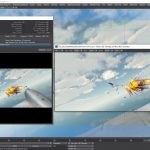
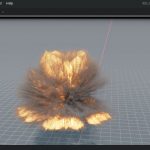


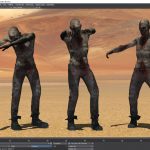
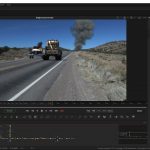



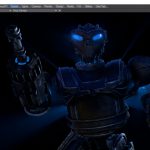
![Adam's Everything LightWave Monster Bundle [AG]](https://www.liberty3d.com/wp-content/plugins/wp-cart-for-digital-products/lib/timthumb.php?src=https://www.liberty3d.com/wp-content/uploads/2023/05/Everything_LightWave_Monster_Bundle_JPEG.jpg&h=125&w=125&zc=1&q=100)
![LightWave 2020- Volume #20- Retro Spaceship Modeling I [AG]](https://www.liberty3d.com/wp-content/plugins/wp-cart-for-digital-products/lib/timthumb.php?src=https://www.liberty3d.com/wp-content/uploads/2023/01/LW_2020_Vol_20_Product_Box_400pix.jpg&h=125&w=125&zc=1&q=100)
![LightWave 2020/2019/2018- Monster Bundle Pack- Volumes #1 to #17 [AG]](https://www.liberty3d.com/wp-content/plugins/wp-cart-for-digital-products/lib/timthumb.php?src=https://www.liberty3d.com/wp-content/uploads/2022/04/LightWave-2020-2019-2018-Bundle-01-JPEG.jpg&h=125&w=125&zc=1&q=100)
![LightWave 2020- Cartoon Character Modeling I & II [AG]](https://www.liberty3d.com/wp-content/plugins/wp-cart-for-digital-products/lib/timthumb.php?src=https://www.liberty3d.com/wp-content/uploads/2022/04/LightWave-2020-Character-Modeling-Bundle-01-JPEG.jpg&h=125&w=125&zc=1&q=100)
![LightWave 2020- Vol. #17- Cartoon Character Modeling II- Body Modeling [AG]](https://www.liberty3d.com/wp-content/plugins/wp-cart-for-digital-products/lib/timthumb.php?src=https://www.liberty3d.com/wp-content/uploads/2022/04/LW_2020_Vol_17_Product_Box_400pix.jpg&h=125&w=125&zc=1&q=100)
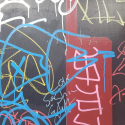
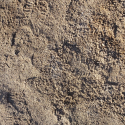
![Practical Production Techniques Vol 1 - 20 Ultra Bundle [KAT]](https://www.liberty3d.com/wp-content/plugins/wp-cart-for-digital-products/lib/timthumb.php?src=https://www.liberty3d.com/wp-content/uploads/2010/09/STORE_Generic.jpg&h=125&w=125&zc=1&q=100)

![Boeing 737-700 in LightWave 3D [Cat]](https://www.liberty3d.com/wp-content/plugins/wp-cart-for-digital-products/lib/timthumb.php?src=https://www.liberty3d.com/wp-content/uploads/2020/07/Cat-737-Wireframe-side.jpg&h=125&w=125&zc=1&q=100)
![C-130 Hercules in LightWave3D [CAT]](https://www.liberty3d.com/wp-content/plugins/wp-cart-for-digital-products/lib/timthumb.php?src=https://www.liberty3d.com/wp-content/uploads/2020/07/C-130-front-bluesky.jpg&h=125&w=125&zc=1&q=100)
![Buy 1 get 2 Free [RR]](https://www.liberty3d.com/wp-content/plugins/wp-cart-for-digital-products/lib/timthumb.php?src=https://www.liberty3d.com/wp-content/uploads/2020/02/3for1.png&h=125&w=125&zc=1&q=100)
![The LFS Project [LFSP]](https://www.liberty3d.com/wp-content/plugins/wp-cart-for-digital-products/lib/timthumb.php?src=https://www.liberty3d.com/wp-content/uploads/2018/08/rising-pracima.jpg&h=125&w=125&zc=1&q=100)
![LightWave 2019/2018 Bundle Pack-Volumes #1 to #12 (Free Bonus Content & Tutorials) [AG]](https://www.liberty3d.com/wp-content/plugins/wp-cart-for-digital-products/lib/timthumb.php?src=https://www.liberty3d.com/wp-content/uploads/2019/10/Lightwave_2019_Bundle_Pack_I_400pix_JPEG.jpg&h=125&w=125&zc=1&q=100)
![LightWave 2019- Volume #12- Modeler Tools IV [AG]](https://www.liberty3d.com/wp-content/plugins/wp-cart-for-digital-products/lib/timthumb.php?src=https://www.liberty3d.com/wp-content/uploads/2019/10/LW_2019_Vol_12_Product_Box_400pix.jpg&h=125&w=125&zc=1&q=100)
![LightWave 2019- Volume #11- Modeler Tools III [AG]](https://www.liberty3d.com/wp-content/plugins/wp-cart-for-digital-products/lib/timthumb.php?src=https://www.liberty3d.com/wp-content/uploads/2019/10/LW_2019_Vol_11_Product_Box_400pix.jpg&h=125&w=125&zc=1&q=100)
![Iron Sky Model and Scene Pack Vol. Two [KAT]](https://www.liberty3d.com/wp-content/plugins/wp-cart-for-digital-products/lib/timthumb.php?src=https://www.liberty3d.com/wp-content/uploads/2018/11/AustraliaPromo_4.jpg&h=125&w=125&zc=1&q=100)
![Iron Sky Model and Scene Pack Vol. One [KAT]](https://www.liberty3d.com/wp-content/plugins/wp-cart-for-digital-products/lib/timthumb.php?src=https://www.liberty3d.com/wp-content/uploads/2018/11/Zepp_20.jpg&h=125&w=125&zc=1&q=100)
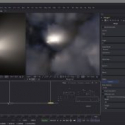
![Advanced LightWave Modeling Projects - Chevy Impala [ELV]](https://www.liberty3d.com/wp-content/plugins/wp-cart-for-digital-products/lib/timthumb.php?src=https://www.liberty3d.com/wp-content/uploads/2016/05/impalapromoone-300x254.jpg&h=125&w=125&zc=1&q=100)
![TFD Advanced Concepts and Projects - Clouds [KAT]](https://www.liberty3d.com/wp-content/plugins/wp-cart-for-digital-products/lib/timthumb.php?src=https://www.liberty3d.com/wp-content/uploads/2016/05/CloudOne_SoftPuffyLookR07_0065-300x169.png&h=125&w=125&zc=1&q=100)
![Fusion for LightWave Artists Part II [KAT]](https://www.liberty3d.com/wp-content/plugins/wp-cart-for-digital-products/lib/timthumb.php?src=https://www.liberty3d.com/wp-content/uploads/2016/03/FFLWAPromo2.jpg&h=125&w=125&zc=1&q=100)
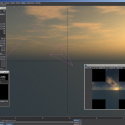
![Instant 3D Turntable for LightWave Users [cw]](https://www.liberty3d.com/wp-content/plugins/wp-cart-for-digital-products/lib/timthumb.php?src=https://www.liberty3d.com/wp-content/uploads/2015/12/Screen-Shot-2015-12-15-at-5.38.22-PM.png&h=125&w=125&zc=1&q=100)
![Fusion for LightWave Artists [KAT]](https://www.liberty3d.com/wp-content/plugins/wp-cart-for-digital-products/lib/timthumb.php?src=https://www.liberty3d.com/wp-content/uploads/2015/09/A10CompExample_01.png&h=125&w=125&zc=1&q=100)
![The Realflow Quick Start Guide [RR]](https://www.liberty3d.com/wp-content/plugins/wp-cart-for-digital-products/lib/timthumb.php?src=https://www.liberty3d.com/wp-content/uploads/2015/07/RR_RealflowQuickStartGuide_ProductTN.png&h=125&w=125&zc=1&q=100)
![Substance Painter for Lightwave Users-Vol.#5-Smart Materials II [AG]](https://www.liberty3d.com/wp-content/plugins/wp-cart-for-digital-products/lib/timthumb.php?src=https://www.liberty3d.com/wp-content/uploads/2018/10/Substance_Painter_for_LW_Users_Vol_5_400pix.jpg&h=125&w=125&zc=1&q=100)
![Substance Painter for Lightwave Users-Vol.#4-Smart Materials [AG]](https://www.liberty3d.com/wp-content/plugins/wp-cart-for-digital-products/lib/timthumb.php?src=https://www.liberty3d.com/wp-content/uploads/2018/10/Substance_Painter_for_LW_Users_Vol_4_400pix.jpg&h=125&w=125&zc=1&q=100)
![Substance Painter for Lightwave Users-Vol.#3- Lightwave Import & Emissive Maps [AG]](https://www.liberty3d.com/wp-content/plugins/wp-cart-for-digital-products/lib/timthumb.php?src=https://www.liberty3d.com/wp-content/uploads/2018/10/Substance_Painter_for_LW_Users_Vol_3_Product_Box_400pix.jpg&h=125&w=125&zc=1&q=100)
![DAZ 3D Model Creation- The Dark Art [AG]](https://www.liberty3d.com/wp-content/plugins/wp-cart-for-digital-products/lib/timthumb.php?src=https://www.liberty3d.com/wp-content/uploads/2018/10/DAZ_3D_Model_Creation_Product_Box_400pix.jpg&h=125&w=125&zc=1&q=100)
![Practical Production Techniques - Vol. 9 Polygon Reduction [KAT]](https://www.liberty3d.com/wp-content/plugins/wp-cart-for-digital-products/lib/timthumb.php?src=https://www.liberty3d.com/wp-content/uploads/2015/02/PolygonCruncherPromoImage.jpg&h=125&w=125&zc=1&q=100)
![The - Get Everything Ryan has Made - bundle [RR]](https://www.liberty3d.com/wp-content/plugins/wp-cart-for-digital-products/lib/timthumb.php?src=https://www.liberty3d.com/wp-content/uploads/2014/10/RR_EverythingBundle.jpg&h=125&w=125&zc=1&q=100)
![Cage and Lattice Workflows by Ryan Roye [RR]](https://www.liberty3d.com/wp-content/plugins/wp-cart-for-digital-products/lib/timthumb.php?src=https://www.liberty3d.com/wp-content/uploads/2014/10/Cage_And_Lattice_ProductImage.jpg&h=125&w=125&zc=1&q=100)
![Practical Production Techniques - Vol. 8 Capital ship combat techniques [KAT]](https://www.liberty3d.com/wp-content/plugins/wp-cart-for-digital-products/lib/timthumb.php?src=https://www.liberty3d.com/wp-content/uploads/2014/10/CapitalShipCombatTechniques_1-150x150.jpg&h=125&w=125&zc=1&q=100)
![Practical Production Techniques - Vol. 7 Advanced Surface Baking Part II [KAT]](https://www.liberty3d.com/wp-content/plugins/wp-cart-for-digital-products/lib/timthumb.php?src=https://www.liberty3d.com/wp-content/uploads/2014/08/Stacy_Suit_PB_Baker_Test_R04.png&h=125&w=125&zc=1&q=100)
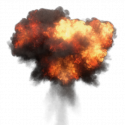
![TFD Advanced Concepts And Projects - Nuclear Weapons Pack [KAT]](https://www.liberty3d.com/wp-content/plugins/wp-cart-for-digital-products/lib/timthumb.php?src=https://www.liberty3d.com/wp-content/uploads/2014/04/TFDNukePack_CollectionPreview-300x164.jpg&h=125&w=125&zc=1&q=100)
![Common Scenarios for Character Animators [RR]](https://www.liberty3d.com/wp-content/plugins/wp-cart-for-digital-products/lib/timthumb.php?src=https://www.liberty3d.com/wp-content/uploads/2014/04/CSCA_TN.jpg&h=125&w=125&zc=1&q=100)
![Tom Roth's Basic Principles of Character Animation [TR]](https://www.liberty3d.com/wp-content/plugins/wp-cart-for-digital-products/lib/timthumb.php?src=https://www.liberty3d.com/wp-content/uploads/2014/02/Tom_Roth.png&h=125&w=125&zc=1&q=100)
![The Comprehensive Guide to IKBooster(Parts 3-5) [RR]](https://www.liberty3d.com/wp-content/plugins/wp-cart-for-digital-products/lib/timthumb.php?src=https://www.liberty3d.com/wp-content/uploads/2014/02/IKBCG_Titlecard_2.jpg&h=125&w=125&zc=1&q=100)
![The Comprehensive Guide to IKBooster (Parts 1-2) [RR]](https://www.liberty3d.com/wp-content/plugins/wp-cart-for-digital-products/lib/timthumb.php?src=https://www.liberty3d.com/wp-content/uploads/2013/11/IKBCG_Titlecard-300x185.jpg&h=125&w=125&zc=1&q=100)


![Intro to TurbulenceFD For LightWave3D [KAT]](https://www.liberty3d.com/wp-content/plugins/wp-cart-for-digital-products/lib/timthumb.php?src=https://www.liberty3d.com/wp-content/uploads/2013/05/TFDPromoImage1.jpg&h=125&w=125&zc=1&q=100)

![Understanding Gradients in LightWave [dwb]](https://www.liberty3d.com/wp-content/plugins/wp-cart-for-digital-products/lib/timthumb.php?src=https://www.liberty3d.com/wp-content/uploads/2012/02/GradientsProductShotSM.jpg&h=125&w=125&zc=1&q=100)



![LightWave 3D- Surfacing- Volume #3-Image Maps [AG]](https://www.liberty3d.com/wp-content/plugins/wp-cart-for-digital-products/lib/timthumb.php?src=http://www.learn3dsoftware.com/LW_Surfacing_Vol_3_Image_Maps_Product_Shot_400pix.jpg&h=125&w=125&zc=1&q=100)
![Digital Bullet Hits Bundle [dwb]](https://www.liberty3d.com/wp-content/plugins/wp-cart-for-digital-products/lib/timthumb.php?src=https://www.liberty3d.com/wp-content/uploads/2011/10/BulletHitsBundle2.jpg&h=125&w=125&zc=1&q=100)
![Digital Bullet Hits: Bullets in a Metal Door 2 [dwb]](https://www.liberty3d.com/wp-content/plugins/wp-cart-for-digital-products/lib/timthumb.php?src=https://www.liberty3d.com/wp-content/uploads/2011/10/MetalDoorTwoProductShotSM2.jpg&h=125&w=125&zc=1&q=100)
![Digital Bullet Hits: Bullets in a Metal Door 1 [dwb]](https://www.liberty3d.com/wp-content/plugins/wp-cart-for-digital-products/lib/timthumb.php?src=https://www.liberty3d.com/wp-content/uploads/2011/10/MetalDoorOneProductShotSM2.jpg&h=125&w=125&zc=1&q=100)
![Digital Bullet Hits: Creating a Squib Line [dwb]](https://www.liberty3d.com/wp-content/plugins/wp-cart-for-digital-products/lib/timthumb.php?src=https://www.liberty3d.com/wp-content/uploads/2011/10/SquibLineDVDBoxSM2.jpg&h=125&w=125&zc=1&q=100)
![Advanced Space Scene Creation Vol. 2 [kat]](https://www.liberty3d.com/wp-content/plugins/wp-cart-for-digital-products/lib/timthumb.php?src=https://liberty3d.com/wp-content/uploads/2010/08/AdvancedSpaceSceneCreationVolumeTwo_Advert_R01.jpg&h=125&w=125&zc=1&q=100)